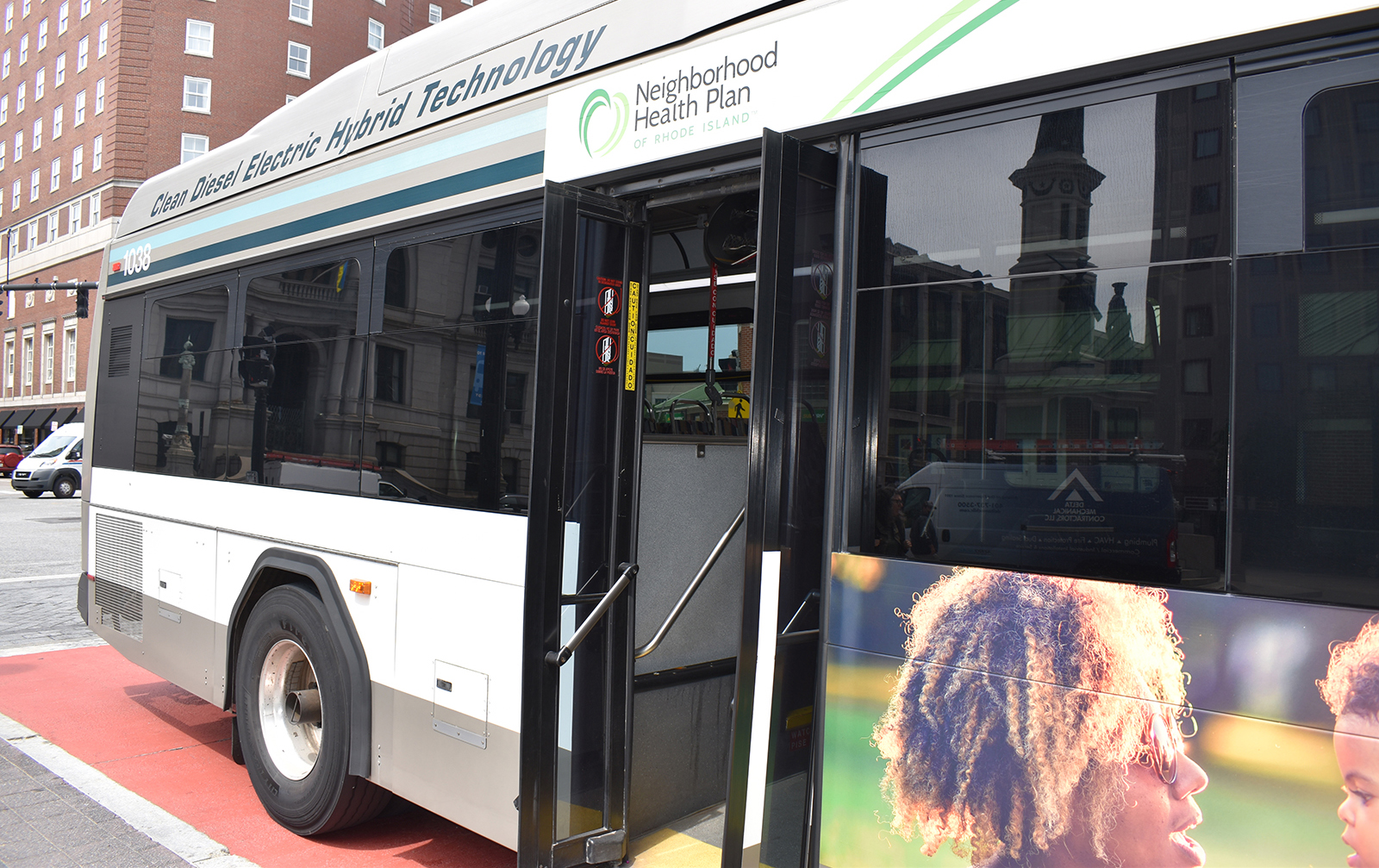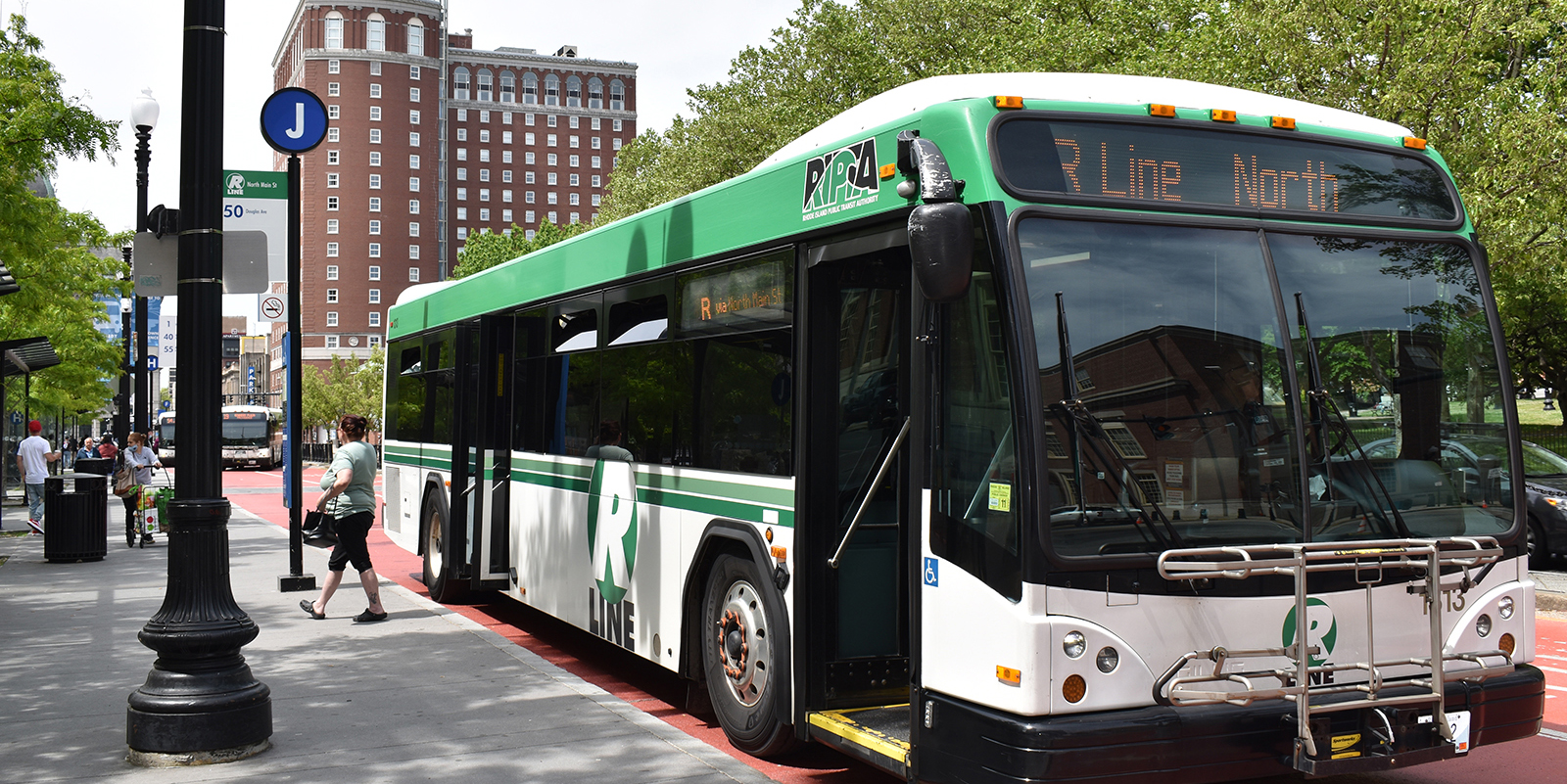Officials Listen to Community About 6-10 Connector
September 7, 2016
PROVIDENCE — The city’s department of Planning + Development heard a resounding message from the hundred or so members of the public who attended its recent listening session on the future of the 6-10 Connector: Attendees demanded that the 1.3-mile stretch of highway between Olneyville and downtown be reconstructed in a way that connects communities divided by the highway and accommodates pedestrians, bicycles, cars and buses, while avoiding the gentrification of the abutting neighborhoods.
The listening session came in the wake of news that the Rhode Island Department of Transportation (RIDOT) wasn’t awarded $175 million in requested federal funding for its preferred version of the project. In its FASTLANE grant application to the U.S. Department of Transportation, RIDOT presented a plan that would encapsulate a small portion of the 6-10 Connector in tunnels just north of the interchange where routes 6 and 10 meet in Olneyville. The plan maintains the highway in tunnels, while creating a limited amount of developable land atop the cap.
The plan shows the cap ending just north of Broadway, beyond which the highway resumes in its current, uncapped state until it meets Interstate 95 near downtown. According to RIDOT, this 1-mile, uncapped segment of highway could be capped over time, though a specific time frame has never been provided. Considering the anticipated cost of the proposed 0.3-mile cap between the 6-10 interchange and Broadway Street, along with the traditional reconstruction of Route 6 from the interchange northwest to Hartford Street, is $595 million, it’s unclear where RIDOT would find the money to continue the cap northward in the future.
RIDOT hasn’t decided how to proceed in the wake of its grant application being rejected, but, in a public statement, promised to “move quickly to evaluate options to tackle this problem and present a recommendation for next steps.” The statement noted the project’s urgency, and it addresses seven structurally deficient bridges that are costing taxpayers millions of dollars annually to keep operational.
RIDOT didn’t respond to ecoRI News questions concerning the project’s time line, in wake of the application’s rejection, and whether the agency will offer more opportunities for public input — an area it didn’t prioritize in its original process — and whether the agency will continue to prioritize freight movement along the 6-10 Connector, a stipulation required by the FASTLANE grant program, now that the federal grant has been rejected.
Allen Penniman, a city planner, told ecoRI News that the rejection of RIDOT’s application “loosened things up” in terms of the project’s timeline, but that the city must still work quickly to develop its own alternative for the 6-10 connector due to the dilapidated bridges. The city’s alternative will be considered, side-by-side, with RIDOT’s proposed designs, and the most suitable version will be constructed.
DPD’s August 30 listening session, held in the shadow of the 6-10 connector at the Asa Messer Elementary School, emphasized public input. After opening remarks from Mayor Jorge Elorza, and two short presentations from Bonnie Nickerson, DPD director, and Martina Hagarty, DPD associate director of special projects, the assembled audience broke into about a dozen smaller groups to participate in an hour-long guided discussion about their visions for the 6-10 connector.
A volunteer from the community led each group discussion, including Molly Henry of the East Coast Greenway Alliance, Barnaby Evans of WaterFire fame, and John Flaherty of Grow Smart Rhode Island.
The groups arrived at strikingly similar goals. All reaffirmed themes presented at a city-sponsored forum in March featuring national advocates of highway removal projects and ideas presented by the planning department at Grow Smart Rhode Island’s Power of Place Summit in June.
Most attendees focused on improving the quality of life for local residents, especially those living near the existing highway. The goals presented conflict with RIDOT’s plans, which focus primarily on maintaining the highway for suburban commuters and freight movement. Department officials told their federal counterparts they would address the negative effects of the highway on abutting communities “to the best extent practicable.”
The most ubiquitous goal arrived at by the public at the city meeting was to reconnect the neighborhoods divided by the 6-10 Connector — including Federal Hill and the West End to the east of the highway, and Valley, Olneyville and Silver Lake to the west — by connecting the grid of city streets on either side of the connector in more places.
This is a pricey proposition if the 6-10 Connector remains a highway in its current state, because the bridges that would be required to accomplish the goal would have to span the entire highway and the Northeast Corridor railroad tracks that run parallel to it. Long bridges are expensive to build and maintain, and don’t lend themselves to creating a feeling of connectivity between the communities on either side. Federal Hill at the southern end of the Dean Street overpass, for example, isn’t seamlessly connected to the Valley neighborhood at the overpass’ north end.
Instead, many at the recent meeting recommended converting the 6-10 Connector into a street-level boulevard that would allow for at-grade crossings at normal intersections. In this scenario, the bridges would be significantly shorter, because they would only need to span the railroad tracks.
The less expensive per-bridge cost would enable more connecting bridges to be built along the span of the corridor, according to advocates of this idea.
One group recommended burying the railroad tracks to eliminate the barriers between neighborhoods entirely, but RIDOT has dismissed this idea due to expense.
RIDOT has argued that the bridges between neighborhoods would be similarly shortened by its capped-highway proposal. While this is true, the limited scope of RIDOT’s cap — between the merge of routes 6 and 10 in Olneyville to just north of Broadway — limits the potential for crossings to be added. In the agency’s rendering of its capped highway, no new connections across the cap are shown, and about half of the cap is occupied by exit and entrance ramps for the highway below. Where the traditional highway resumes north of the cap, bridges would continue to be lengthy and expensive, and, presumably, remain few in number.
It should be noted that the city’s planning department and RIDOT generally approach the scope of the 6-10 Connector project differently. RIDOT is focused only on the stretch of highway between Hartford Avenue and Broadway, while the city generally expands the scope to include the full stretch of the 6-10 Connector between Broadway and downtown. This could be because the infrastructure-heavy plans put forth by RIDOT would cost too much to extend beyond Broadway, while the boulevard approach seemingly favored by the city would be less costly, and, therefore, could be extended further.
At RIDOT meetings, officials point out possible traffic-congestion issues at specific intersections. Planning department meetings tend to encourage the public to “think big.”
A similarly common goal expressed at the Aug. 30 meeting was to make the redesigned 6-10 Connector multimodal. The groups demanded safe transportation amenities that accommodate pedestrians, bicyclers, motorists and transit users. Groups said a multimodal connector would activate the stretch of roadway in a way that a limited-access highway can’t and would create a better gateway to downtown.
One group suggested adding an additional set of tracks alongside the existing Northeast Corridor railroad to offer commuter rail stations in Olneyville, Johnston and Cranston. Groups also recommended connecting existing bike paths, including the Woonasquatucket River Greenway and Washington Secondary Bike Path, to create a more useful network.
“We want to allow public transit to have a competitive advantage,” said Laura Bozzi when presenting her group’s goals to the attendees. “If public transit is going to work well in Providence, it needs to be able to be a better option than cars.”
RIDOT has claimed that its capped highway offers “the best of both worlds” — a highway in tunnels to zip commuters to and through downtown, and developable space on the cap that could be used to create a multimodal boulevard. Here again, the scope of RIDOT’s project undermines its claim. The cap would span just three-tenths of a mile with no current plan to be extended north of Broadway. Advocates of a multimodal 6-10 Connector have something bigger in mind — a seamless connection between Olneyville and downtown for pedestrians, cyclists, transit users and motorists.
A related goal included on most groups’ lists was to reclaim land currently reserved for the highway for development, parks and civic spaces, thereby attracting new companies, creating jobs and increasing the city’s tax base.
Improving the quality of life of residents in abutting communities and ensuring they aren’t displaced by rising rents in the future was another common goal. Nearly a quarter of the people living near the 6-10 Connector live in poverty, almost double the rate for Rhode Island. A quarter of the people living near the 6-10 Connector are car free with rates as high as 50 percent in some neighborhoods. Twenty percent of students who go to school near the 6-10 Connector have asthma, double the national rate.
Improving public health, access to transportation for non-car-owning households, and building an adequate amount of affordable housing were each noted as being important components of ensuring the well-being of the existing communities.
“People who drive through the city should do so on the terms of the people who live here,” said one group representative. “That’s not intended to be nasty to people from out of town, but if you turn it around and make the people who live in the city bear the costs of outside commuting, I don’t think that’s just.”
The attendees of the listening session were largely white — not representative of the communities through which the 6-10 Connector travels. Both attendees and and the planning department noted this issue openly. Penniman, a city planner, said the department would provide similar listening sessions for local community groups, and recommended that interested groups contact him.
“Were not done gathering input,” he said.
Many of the groups recommended considering cost when choosing a design, and questioned the wisdom of building and maintaining a series of tunnels at a time when the state is already struggling to maintain its infrastructure. RIDOT has said a capped highway wouldn’t cost significantly more than a traditional highway rebuild and would be fairly inexpensive to maintain because tunnels aren’t exposed to bad weather or the corrosive effects of road salt. RIDOT also has noted that a boulevard design would be less expensive to build and cost about the same to maintain as a city street.
Seth Zeren, of Fix the 6-10, a new coalition of local groups in support of a fiscal responsibility, environmentally/socially just, multimodal solution to the 6-10 Connector, said he is concerned that the well-being of local community is being disregarded to save commuters a few minutes.
“What is the value of two minutes saved on the 6-10?” he asked during an interview after the event, in reference to the negative environmental, health and social impacts the highway has on the abutting communities. “The question is, are we designing a road for 1960 or 2020?”
Update Sept. 8: Shortly after this story was posted, Gov. Gina Raimondo’s office issued a press release saying a fast-tracked reconstruction of the 6-10 Connector is needed, squashing the idea of an alternative, such as a boulevard, that wouldconnect communities divided by the deteriorating maze of concrete.
The governor cited public safety concerns raised in a recent letter from the Federal Highway Administration.
Seven of the nine bridges along the interchange have been structurally deficient for more than a decade. The state didn’t do anything until forced to, in the same manner the state Department of Transportation handled years of inadequately monitoring highway runoff.



